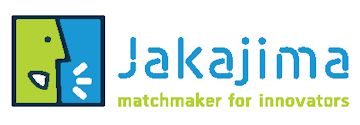Fused deposition modeling (FDM) is a popular three-dimensional printing technology known for its environmental friendliness, design flexibility, and user-friendly operation. It operates by extruding a filament through a heated nozzle, which deposits successive layers of material, solidifying onto a build plate based on a computer-generated design. Recently, the interest in applying fused deposition modeling in the pharmaceutical sector has been increased.
 | 30-31 January 2025 |  |
|||||
(1). A manufacturing step, hot-melt extrusion (HME), is involved for the production of drug-loaded filaments. The versatility and benefits of implementing fused deposition modeling in the pharmaceutical field (community and/or hospital pharmacies) to develop innovative oral solid dosage forms are investigated.Firstly, the modification of the drug dissolution rate by 3D printing is studied. Low aqueous solubility drugs belonging to the second class of the Biopharmaceutics Classification System were examined. Indeed, case studies were conducted using model drugs having different therapeutic interests
(2). First, the Itraconazole was used and different formulations and design were produced by FDM
(3). We have demonstrated that the dissolution rate relied on infill density and polymers composition, altering surface-to-volume ratio and component distribution, respectively. Second, the cannabidiol (CBD) has been studied by HME coupled to FDM. The amorphization of the drug during the process lead to a significant increase of the dissolution speed which will ultimately influence in vivo bioavailability
(4). Secondly, 3D printing’s interest in personalized medicine is investigated. Healthcare now emphasizes patient-centered care and individualized therapies, especially for vulnerable groups like children. As an example, adrenal insufficiency treatment with hydrocortisone was selected. The few marketed oral hydrocortisone products lack suitability for various required doses. Moreover, compounding capsules often fail to meet mass and content uniformity standards. Hence, high-quality oral solid dosage forms with low hydrocortisone content were developed. Using the same filament but varying printed shapes dimensions, forms containing different drug doses were achieved. Two designs were created: an immediate release pediatric-friendly red mini-waffle shape
(5) and a sustained release torus shape
(6). Despite the considerable challenge of low drug doses, both printed forms met European Pharmacopeia specifications for mass uniformity, content uniformity, friability, and hardness. FDM 3D printing technique is highly promising to develop low-dose and high-dose oral solid dosage forms thanks to the modification of printed forms shapes and sizes. This technology could be implemented in hospital and community pharmacies to produce drug products of advanced quality providing access to individualized healthcare for patients. (see literature list at the bottom of this page).
Anne is driven by research about new medicine production technology! 3D printing is the best example of last decade in medicine production innovation, whereby this technology (3D printing technologies for personalized medicine in community and hospital pharmacies) is most promising.
About Anna Lechanteur
Anna Lechanteur is graduated in Pharmaceuticals Sciences, since June 2012 at the University of Liège in Belgium. Afterwards, she did its PhD Studentship under the mentorship of Prof. Geraldine Piel (Laboratory of Pharmaceutical Technology and Biopharmacy, University de Liège, CIRM, Prof. B. Evrard). During four years of research, she has worked on the development of lipid-nanoparticules carrying siRNA molecules for vaginal administration. She has successfully defended her PhD in Liege on September 2016.
Then, she got the Grant Marie-Curie COFUND Postdoctoral Fellowship to go abroad. She went to i3S in the laboratory of Professor Bruno Sarmento (University of Porto, Portugal) working on a research project focused on the development of a new intestinal 3D-model barrier used as a multifunctional platform for drug and nanoparticle absorption studies.
Back at the University of Liege (2017) in the Laboratory of Pharmaceutical Technology and Biopharmacy, she was post-doctoral researcher and Scientific Coordinator of different research project in pharmaceutical technology.
In 2020, Anna Lechanteur was appointed professor (part time) of Pharmaceutical Technology at the University of Namur (Belgium) while keeping research activities at the University of Liege. Finally, since 2022, Anna Lechanteur is Associated Professor in Pharmaceutical Technology (full time) at the University of Liège (Prof Evrard’ lab). In addition to teaching activities, she is leading research projects about 3D printing and inhaled powder development.
Anna Lechanteur is author/co-author of 41 papers (h index 19).
About University of Liège, Laboratory of Pharmaceutical Technology and Biopharmacy, Department of Pharmacy, CIRM
LTPB’s main objective is to design new pharmaceutical systems for controlled drug delivery and administration of drugs.
LTPB is made up of researchers from different disciplines (pharmacists, chemists, biologists, biomedical sciences graduates), which allows it to consider not only the formulation but also the physicochemical characterization and biological evaluation of medicines. With its multidisciplinary approach, the LTPB has considerable assets to address different research themes around drug formulation.
For more information visit the website.
Anna Lechanteur will speak at the 2023 edition of the 3D Medical Conference.
Literature list
- (1) Parulski, C. Jennotte, O. Lechanteur, A. Evrard, B. (2021) Challenges of Fused Deposition Modeling 3D Printing in Pharmaceutical Applications: Where are we now ? Advanced Drug Delivery Reviews.
- (2) Jennotte, O. Koch, N. Lechanteur, A. Evrard, B. (2020) Three-dimensional printing technology as a promising tool in bioavailability enhancement of poorly water-soluble molecules: A review. International Journal of Pharmaceutics.
- (3) Parulski, C. Gresse, E. Jennotte, O. Felten, A. Ziemons, E. Lechanteur, A. Evrard, B. (2022) Fused deposition modeling 3D printing of solid oral dosage forms containing amorphous solid dispersions: How to elucidate drug dissolution mechanisms through surface spectral analysis techniques? International Journal of Pharmaceutics.
- (4) Jennotte, O. Koch, N. Lechanteur, A. Evrard, B. (2023). Formulation and quality consideration of cannabidiol printed forms produced by fused-deposition modelling. Journal of Drug Delivery Science and Technology.
- (5) Parulski, C. Bya, L-A. Goebels, J. Servais, A-C, Lechanteur, A. Evrard, B. (2023). Development of 3D printed mini-waffle shapes containing hydrocortisone for children’s personalized medicine. International Journal of Pharmaceutics.
- (6) Ayyoubi, S. van Kampen, E. Kocabas, L. Parulski, C. Lechanteur, A. Evrard, B. De Jager, K. Muller, E. Wilms, E. Meulenhoff, P. Ruijgrok, E. (2023). 3D printed, personalized sustained release cortisol for patients with adrenal insufficiency. International Journal of Pharmaceutics.

